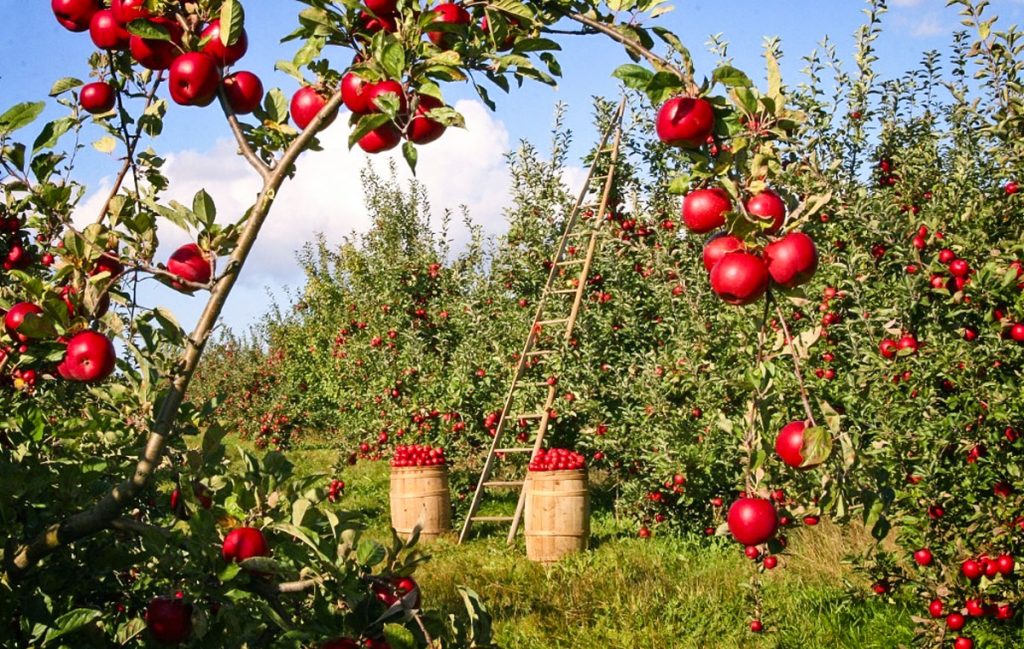An apple a day…

Apples are delicious on their own, but their versatility makes them one of the most consumed fruits in the world. Cider, juice, sauce, crisps and pie made with apples all come to mind for their sweetness, but this hardy fruit works well in salads, sandwiches and chicken dinners, too. Here are some fun facts about apples:
- The top apple producers around the world are China, the United States, Turkey, Poland and Italy. Apples account for 50 percent of international deciduous fruit tree production.
- There are over 2,500 varieties of apples grown in the U.S.
- The most popular varieties of apples in the U.S. are the Red Delicious, Golden Delicious, and the Granny Smith.
- Apples float in water because a whopping 25% of their volume is actually air. Apples are less dense than water, making them the perfect fruit for apple bobbing.
- Apples contain almost twice the amount of fiber as one serving of a fiber supplement.
- The fiber in apples can help one feel full on fewer calories, which can ultimately help in weight management. Plus, fiber fights cholesterol and lowers heart disease risk.
- The malic acid in apples can help mitigate pain associated with fibromyalgia and chronic fatigue syndrome.
- This healthy fruit contains pectin, quercetin, procyanidins, and vitamin C, which are all beneficial in the prevention of disease and cancer.
- Most of the antioxidants found in apples, including quercetin, are located in the skin.
- Apples will ripen six to ten times faster at room temperature than if they are refrigerated.
- The science of apple growing is called pomology.
- Pilgrims planted the first U.S. apple trees in the Massachusetts Bay Colony.
- Apples are members of the rose family.
- The fear of apples is known as Malusdomesticaphobia. This phobia gets its name from the scientific name of apples, which is Malus domestica.
- Most apple blossoms are pink when they open but gradually transform into white.
- It takes the energy of 50 leaves to produce one apple.
- Apples come in all sizes, from just a bit bigger than a cherry, to about the same size as a grapefruit.
- The largest apple ever picked weighed in at 3 pounds, 2 ounces.
- Thanks to their high levels of boron, apples can help improve memory, mental alertness, and electrical activity of the brain.
- The average person eats 65 apples per year.
- Most apples are still picked by hand.
- Apple trees can live to be about 100 years old.
By Lisa Nicklanovich; courtesy photo
September 1, 2023//Comments Off on An apple a day…
Posted in News, Sports & Wellness